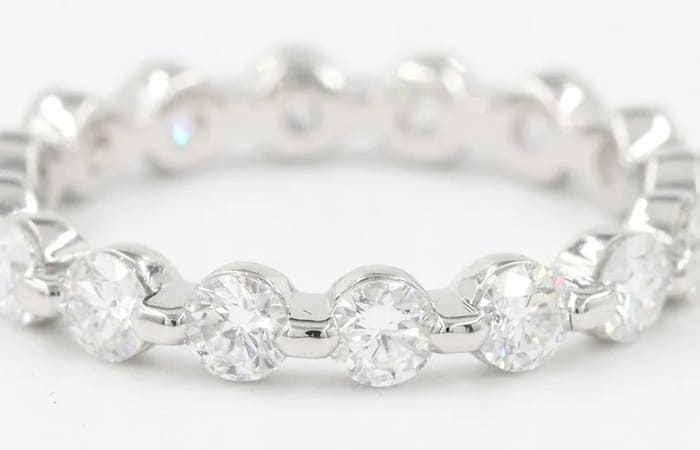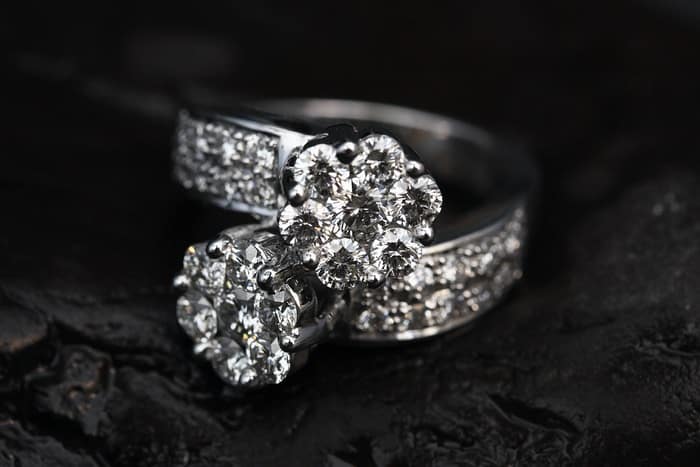Diamonds are a precious and timeless gemstone. They come in all shapes, sizes, colors and levels of quality. No matter what your style or budget, there is a diamond out there that will fit your needs. To help you choose the perfect diamond for your specific needs, we’ve put together the following buyer guide.

Types of Diamond
There are different types of diamonds, with their names based on or labeled according to the rarity or cut.
The most prevalent types of diamonds you can find in the market right now include:
- Pear cut diamond
- Trillion cut diamond
- Round cut diamond
- Princess cut diamond
- Asscher cut diamond
- Oval cut diamond
- Heart cut diamond
- Emerald cut diamond
- Marquise cut diamond
- Cushion cut diamond
- Radiant cut diamond
Aside from these popular ones, there are still other diamond names waiting to be discovered such as the rose cut diamond, tapered cut diamond, square cut diamond, and baguette cut diamond.
Aside from the types of diamonds based on cut, there are also different diamond colors including:
- Black diamond
- Blue diamond
- Brown diamond
- Green diamond
- Grey diamond
- Olive green diamond
- Orange diamond
- Pink diamond
- Purple diamond
- Red diamond
- Yellow diamond
These colored diamonds are graded according to hue, tone, distribution, and saturation. Colored diamonds of a single color also have higher value diamonds with mixed colors.
Diamonds are also categorized according to their quality, and this is where the 4Cs come in.
Factors to Consider When Buying Diamonds
The prices of diamonds depend on supply and demand. Just so you know, there are actually large numbers of rough diamonds. However, the diamond industry is in control of the rate of mining and cutting diamonds to ensure the rarity of jewel-quality diamonds in the market.
Diamond shape refers to its overall physical form and geometric outline. All shapes of diamonds have their unique cut specifications and attributes that play a big role in the overall appearance of the stone.
The shape of a diamond is a vital consideration when shopping for one because it has a direct influence on the final price of the stone. Round diamonds are often more expensive compared to other shapes thanks to their higher manufacturing costs, market demand, and incredible brilliance.

Colors
You can find gem-quality diamonds in various colors, ranging from light brown or light yellow to colorless, with colorless diamonds considered the rarest. Other natural hues such as pink, red, or blue are referred to as fancy, with a color grading different from that of white colorless diamonds.
Many diamond buyers prefer transparent or white diamonds. As far as these clear diamonds are concerned, color pertains to the degree of transparency of the diamond or how colorless it is.
Almost all white diamonds feature some touch of yellowish color no matter how slight. A stone is less desirable if it has a more yellowish color, making it less expensive.
As stated earlier, diamonds are available in various colors. The colored diamonds are called fancy diamonds. Many color fancy diamonds in general are cheaper compared to white diamonds but are still equally beautiful. However, fancy red and fancy blue diamonds are extremely expensive and rare.
Clarity
Diamonds can have external characteristics called blemishes or internal characteristics called inclusions. It is rare to find diamonds without these blemishes or inclusions but many of these characteristics are only visible through magnification. A clearer diamond is considered better, more expensive, and more desirable.
Almost all diamonds feature small flaws or some inclusions which are often black or grey specks. There can also be some spots of cloudiness or feature within the stone. All inclusions are regarded as imperfections in the stone, thereby reducing the diamond’s clarity.
Cut
Out of all the 4Cs, the cut has the most significant effect on the overall beauty of a diamond. To determine the cut’s quality, a diamond grader will evaluate the skills of the cutter in the diamond’s fashioning. A diamond will be more captivating to the eye if the cut is more precise.
The cut is sadly the least well-understood consideration among many first-time buyers of a diamond. Interestingly, cut also happens to be the most critical quality to determine a diamond’s price.
Remember that the cut here doesn’t refer to the shape of the diamond, such as cushion, heart, round, or princess. Instead, this means the cut quality, or how well the cut was executed by the diamond craftsperson when making the jewel out of a rough diamond.
Straight out of the mines, diamonds resemble plain rocks. Adept diamond cutters will shape the diamond by striking it along the planes of cleavage, something that requires both skill and luck. Diamonds that emerge completely symmetrical and proportional with a shape that showcases their brilliance, sparkle, and fire are dubbed as well-cut.
The five grades of cut quality of diamonds are Excellent, Very Good, Good, Fair, and Poor.

Carat Weight
The carat refers to the physical weight of the diamond measured in metric carats. A single carat is equivalent to 1/5 gram subdivided into 100 points. Out of the 4Cs, carat weight is considered the most objective grade.
Diamonds are very dense, and as a result, the carat weight of a diamond essentially translates to size. A diamond is larger if it weighs more and consequently, it will also be more expensive.
Setting
The prong setting is the most classic and also the most popular setting for diamonds because a minimal amount of metal holds the stone in place, usually 4 or 6 prongs only. It allows more amounts of light to pass through the diamond which results in extra brilliance.
Conclusion
When buying diamonds, focusing on the 4Cs matters the most. The quality of a diamond is best determined according to its cut quality, color, clarity grade, and carat weight.
Having a complete and in-depth understanding of the 4Cs of diamonds will not just help you ensure that you will pick a good quality diamond because, at the same time, it will also give you peace of mind knowing that you will be scoring a great deal.
Lack of sufficient knowledge regarding the 4Cs of diamonds can make the whole process of shopping for diamonds a bit confusing and downright intimidating.



